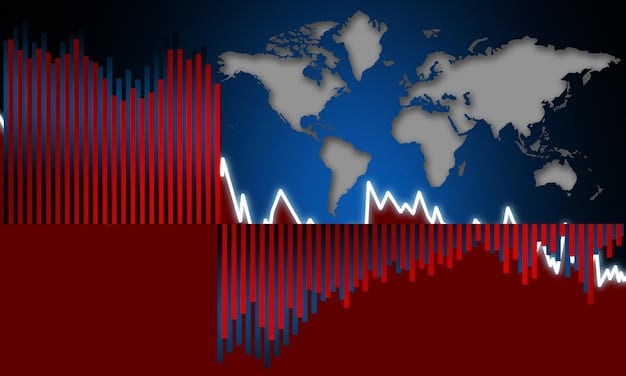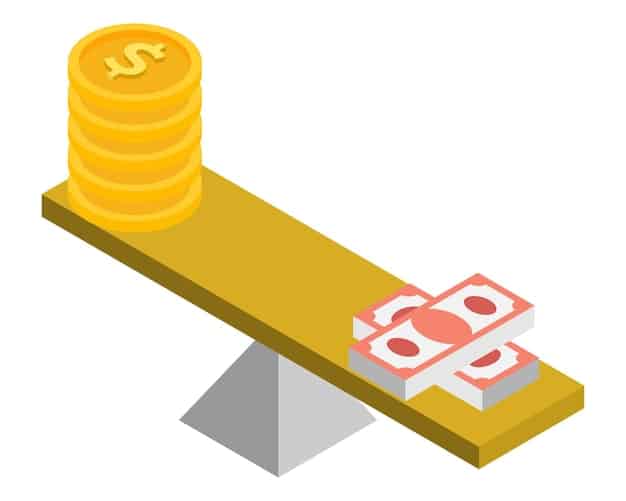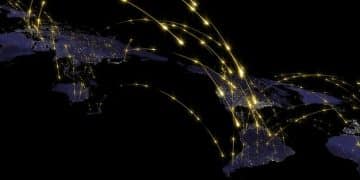How Rising Global Interest Rates Impact US Borrowing Costs

The anticipated increase in global interest rates is poised to significantly affect US borrowing costs, potentially leading to higher expenses for consumers and businesses alike, influencing everything from mortgages to corporate loans.
The global economic landscape is bracing for a potential increase in interest rates. But how will the expected increase in global interest rates affect US borrowing costs? This shift could ripple through the US economy, impacting everything from mortgages and credit card rates to business loans and investments.
Understanding Global Interest Rates
Global interest rates are a key indicator of the overall health of the global economy. They influence currency exchange rates, international trade, and investment flows. Changes in these rates can have significant and far-reaching consequences.
So, what exactly are global interest rates and why are they so important?
What are Global Interest Rates?
Global interest rates are the benchmark rates set by central banks around the world. These rates determine the cost of borrowing money and influence economic activity within and across borders.
The Importance of Global Interest Rates
- Influence on Currency Exchange Rates: Higher interest rates can attract foreign investment, increasing demand for a country’s currency.
- Impact on International Trade: Changes in interest rates can affect the competitiveness of a country’s exports.
- Effect on Investment Flows: Investors often seek higher returns in countries with higher interest rates.
Understanding these foundational elements is crucial to grasping the potential effects on the US economy.

The Interconnectedness of Global and US Interest Rates
The United States, despite its economic strength, is not immune to global economic trends. The US economy is deeply intertwined with the rest of the world through trade, investment, and financial markets. As a result, changes in global interest rates can have a direct impact on US borrowing costs.
Why is this interconnectedness so significant?
Capital Flows
The US financial markets attract capital from around the world. When global interest rates rise, investors may shift their capital to other countries offering higher returns. This can reduce the supply of capital in the US.
Trade
Higher global interest rates can also affect US trade. If other countries’ interest rates rise, their currencies may appreciate against the US dollar, making US exports more expensive and imports cheaper.
This interconnectedness means that the Federal Reserve must consider global interest rate trends when making its own monetary policy decisions.
How Global Rate Hikes Affect US Consumers
One of the most direct ways that global interest rate hikes affect the United States is through increased borrowing costs for consumers. From mortgages to credit cards, higher rates can make it more expensive for Americans to borrow money.
How exactly does this transmission mechanism work?
Mortgage Rates
Mortgage rates often track the yield on the 10-year US Treasury note, which is influenced by global interest rates. If global rates rise, the yield on the 10-year Treasury may also increase, leading to higher mortgage rates.
Credit Card Rates
Credit card rates are typically variable and tied to a benchmark rate, such as the prime rate. As global interest rates rise, the Federal Reserve may increase the prime rate, leading to higher credit card rates.
Auto Loans
Like mortgages and credit cards, auto loan rates can also increase in response to rising global interest rates. This can make it more expensive for consumers to purchase vehicles.
This increase in borrowing costs can affect consumer spending, which is a major driver of the US economy.
Impact on US Businesses
US businesses, like consumers, also face higher borrowing costs when global interest rates rise. This can affect their investment decisions, hiring plans, and overall profitability.
What are the specific ways that businesses are affected?
Corporate Loans
Companies often rely on loans to finance their operations and investments. Higher global interest rates can lead to increased borrowing costs for these loans, reducing profitability.
Bond Issuance
Many companies issue bonds to raise capital. When global interest rates rise, the yields on these bonds may also increase, making it more expensive for companies to borrow money.
Investment Decisions
Higher borrowing costs can make it more difficult for companies to justify new investments. This can lead to a slowdown in economic growth.

The Federal Reserve’s Response
The Federal Reserve (Fed) plays a critical role in managing the US economy’s response to global interest rate changes. The Fed’s monetary policy decisions can help to mitigate the impact of global rate hikes on US borrowing costs.
How does the Fed address these challenges?
Monetary Policy
The Fed can adjust its monetary policy to influence interest rates in the US. For example, it can lower the federal funds rate to offset the impact of rising global rates.
Quantitative Easing
The Fed can also use quantitative easing (QE) to lower long-term interest rates. QE involves the Fed purchasing government bonds and other assets to increase the money supply.
Forward Guidance
The Fed can provide forward guidance to communicate its intentions to the market. This can help to manage expectations and reduce uncertainty.
The Fed’s response can have a significant impact on the US economy’s ability to weather global interest rate changes.
Potential Economic Scenarios
The actual impact of rising global interest rates on US borrowing costs will depend on a variety of factors, including the pace of the rate hikes, the strength of the US economy, and the Fed’s response. Several economic scenarios are possible depending on these factors.
Let’s consider some of the potential outcomes.
Scenario 1: Soft Landing
In this scenario, the global interest rate hikes are gradual, and the US economy remains strong. The Fed is able to manage inflation without causing a recession, and the impact on US borrowing costs is minimal.
Scenario 2: Moderate Slowdown
In this scenario, the global interest rate hikes are more aggressive, and the US economy slows down. The Fed is able to prevent a recession, but economic growth is weaker than expected.
Scenario 3: Recession
In this scenario, the global interest rate hikes are rapid, and the US economy falls into a recession. The Fed is unable to prevent a sharp decline in economic activity.
Each of these scenarios carries its own implications for consumers, businesses, and investors.
Strategies for Navigating Rising Interest Rates
Given the potential impact of rising global interest rates on US borrowing costs, it’s important for consumers, businesses, and investors to develop strategies for navigating this environment.
What steps can be taken to mitigate the risks?
For Consumers
- Pay Down Debt: Reduce your debt burden to minimize the impact of rising interest rates.
- Shop Around for Loans: Compare rates from different lenders to find the best deal.
- Consider Fixed-Rate Loans: Lock in a fixed interest rate to protect yourself from future rate increases.
For Businesses
- Manage Debt Levels: Reduce your reliance on debt financing to minimize the impact of rising interest rates.
- Invest in Efficiency: Improve your operational efficiency to increase profitability and reduce the need for borrowing.
- Diversify Funding Sources: Explore alternative sources of funding, such as equity financing.
These strategies can help to mitigate the negative effects of rising global interest rates on US borrowing costs.
| Key Point | Brief Description |
|---|---|
| 🌍 Global Impact | Global rates influence US borrowing costs due to interconnected financial markets. |
| 🏠 Consumer Costs | Consumers face higher rates on mortgages, credit cards, and auto loans. |
| 🏢 Business Impact | Businesses encounter increased costs for corporate loans and bond issuance. |
| 🏦 Fed Response | The Federal Reserve uses monetary policy to mitigate the effects. |
FAQ
▼
Global interest rates affect capital flows, trade, and the overall economic environment, which in turn influences US borrowing costs and economic stability.
▼
Rising global interest rates typically lead to higher mortgage rates, making it more expensive to buy a home or refinance an existing mortgage.
▼
Businesses can manage their debt levels, invest in efficiency, and consider alternative funding sources to mitigate the impact of rising borrowing costs.
▼
The Federal Reserve uses monetary policy tools to manage interest rates and stabilize the economy in response to global rate changes.
▼
Rising interest rates can benefit savers and those holding government bonds, as well as help to control inflation in a growing economy.
Conclusion
In conclusion, the expected increase in global interest rates presents both challenges and opportunities for the US economy. By understanding the potential impacts and implementing proactive strategies, consumers, businesses, and policymakers can navigate this evolving financial landscape and mitigate the negative effects on US borrowing costs.





